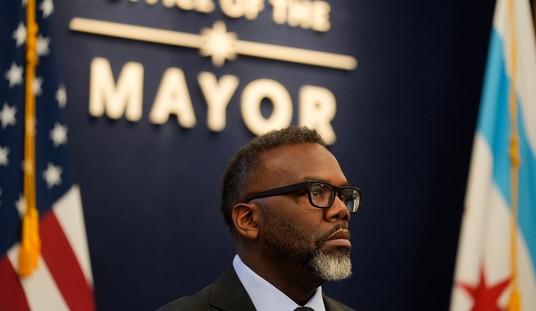Has the World Heath Organization “changed its mind” on lockdowns as a strategy against COVID-19? Dr. Andy Nabarro, WHO’s special envoy on the pandemic, told The Spectator that lockdowns have created a parallel disaster, especially for the working class and the poor. Instead, Nabarro says that WHO wants a “middle way” on preventing the spread of COVID-19 — a strategy that will sound pretty familiar.
This picks up at the 15-minute mark:
The World Health Organisation has backflipped on its original COVID-19 stance after calling for world leaders to stop locking down their countries and economies.
Dr. David Nabarro from the WHO appealed to world leaders yesterday, telling them to stop “using lockdowns as your primary control method” of the coronavirus.
He also claimed that the only thing lockdowns achieved was poverty – with no mention of the potential lives saved.
“Lockdowns just have one consequence that you must never ever belittle, and that is making poor people an awful lot poorer,” he said.
The British newspaper Metro calls this a change from the summer, when WHO suggested that lockdowns might be the only option:
Dr. David Nabarro, a Special Envoy of the WHO’s director-general on Covid-19 has argued ‘too many restrictions damage people’s livelihoods and provoke resentment.’ Furthermore, he told The Spectator that ‘we in the World Health Organisation do not advocate lockdowns as the primary means of control of this virus.’ Which is a bit of a change in tone from the summer, when Dr. Michael Ryan, executive director of WHO’s Health Emergencies Program, said lockdown may be the only option.
‘We all want to avoid whole countries going back into total lockdown,’ he said during a press conference. ‘That is not a desire that anybody has. But there may be situations in which that is the only option.’
So what is the “middle path”? Nabarro laid it out at his own site, saying it was a balance against imposing restrictions and just letting the virus run wild. The middle path requires robust and timely testing, subsidiarity, and a recognition that the virus is dangerous — but that it’s not just going away, either:
a) People are encouraged to adopt all precautions all the time. As Tedros of WHO says: ‘Do it All’: physical distancing, proper face-masking, hand/cough/surface hygiene, self-isolating when ill and shielding those most at risk. There should be no exceptions anywhere. This is best achieved through engaging people and trusting them rather than coercion if at all possible.
b) Public health services are organized to offer locally-integrated support for interrupting transmission and suppressing clusters. This means test-trace-isolate-protect services everywhere, with clearly justified performance metrics. It is important there is enough testing capacity to pick up where the virus is, to detect spikes and manage surges. From time to time it will be necessary briefly to restrict movement locally to enable suppression of outbreaks. [NB Building public health capacity is not the same as implementing lockdowns. It is about building up the capability of public health services to interrupt transmission in localities. Experience around the world shows that this capability is key to a successful COVID responses. Lockdowns just freeze the virus in pace they do not lead to elimination].
c) Messaging is consistent and clear within and between nations. If leaders are not consistent in their requests and advocacy, their people will be confused, perhaps frustrated. In that context the virus is unforgiving and may well spread massively.
The reality is that the virus is a common foe: it is here to stay, and we all have roles to play in keeping it at bay.
If this sounds oddly familiar, it’s because it closely resembles the proposed plan after the initial lockdowns in the US. Our testing capacity has still not developed well enough to meet Nabarro’s standard, but otherwise, this is exactly how we were planning to deal with the issue in the US — social distancing, hygiene, testing, and curbing outbreaks on the local level. The CDC made a huge error when they initially denigrated face masks, an idiotic “noble lie” for which they have paid ever since.
But otherwise, this is the plan that sold Americans on “15 Days to Slow the Spread,” and even on its 30-day extension. Even at that time, voices warned that lockdowns would only extend the transmission cycle and lead to economic devastation that had health impacts all its own. COVID-19 will do what viruses do — spread, either sooner or later. The initial lockdowns were intended as a pause allowing us to get resources in place to deal with it, not as a strategy to make it disappear. As Nabarro says, it’s not going to simply vanish, so we have to figure out how to live with it — perhaps until vaccines can truly slow down or even halt the transmission, or at least allow us to develop specific antibodies that will make this an entirely survivable flu-like condition.
Does the WHO actually agree with Nabarro, though? He’s speaking officially here, but it’s curious that Nabarro’s “middle way” essay isn’t hosted on WHO’s official website. That might be a good question for American media to ask, but first they’d have to cover Nabarro’s remarks. So far, no major US outlet is picking them up.








Join the conversation as a VIP Member